Key takeaways:
- Creative cropping enhances the emotional connection between the viewer and the subject by focusing on essential elements and eliminating distractions.
- Common techniques like the rule of thirds, centered composition, and storytelling cropping can significantly improve the impact of a photograph.
- Effective cropping tools, both software and physical methods, enable precise adjustments that transform images into more compelling visuals.
- Personal cropping guidelines, such as maintaining balance with negative space and being mindful of edges, contribute to stronger photographic storytelling.
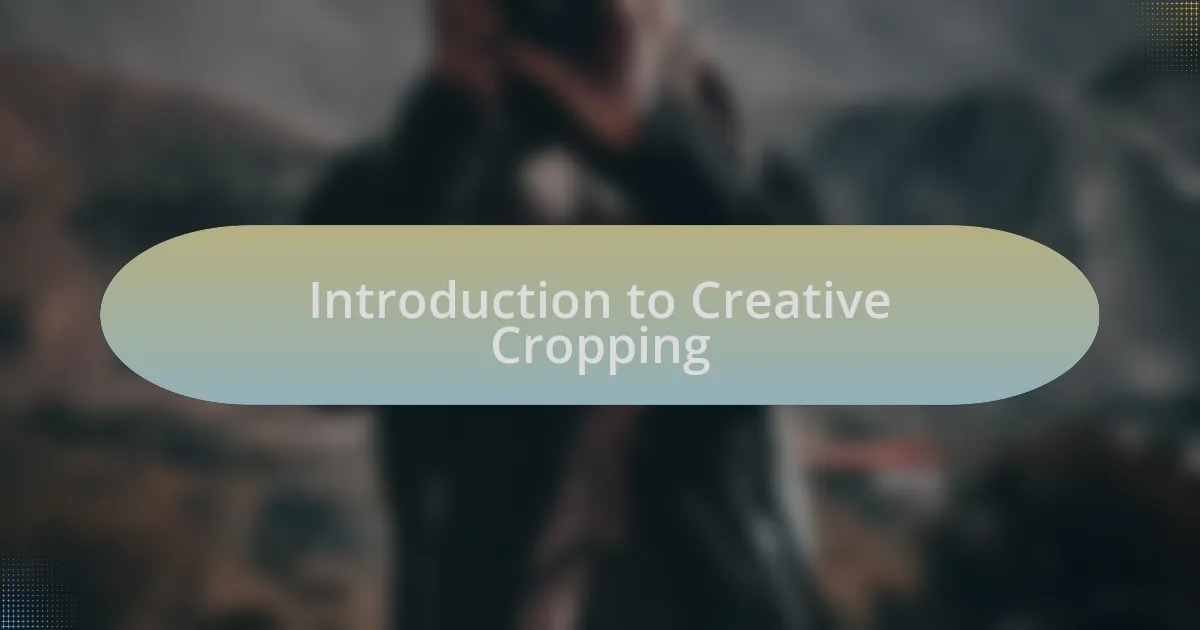
Introduction to Creative Cropping
Creative cropping is a fascinating technique that can transform the narrative of an image. I remember the first time I decided to crop a photo of my daughter playing in the park. Just by focusing on her joyful expression, I felt it captured a fleeting moment more effectively than the original wide shot. Have you ever experienced that joy in narrowing down a scene to reveal its true essence?
When I dive into my photo archive, I often find gems hidden behind excessive background. Sometimes, I feel compelled to crop tightly, honing in on the subject to evoke emotions that resonate with viewers. It makes me wonder, how often do we overlook powerful moments simply because we’re stuck in the habit of including too much in our frame?
What I’ve discovered is that creative cropping isn’t just about what you take away; it’s about enhancing the connection between the viewer and the subject. I often challenge myself to rethink each composition, asking, “What story do I want to tell?” This process is not only liberating but can lead to surprising clarity and impact in my photography.
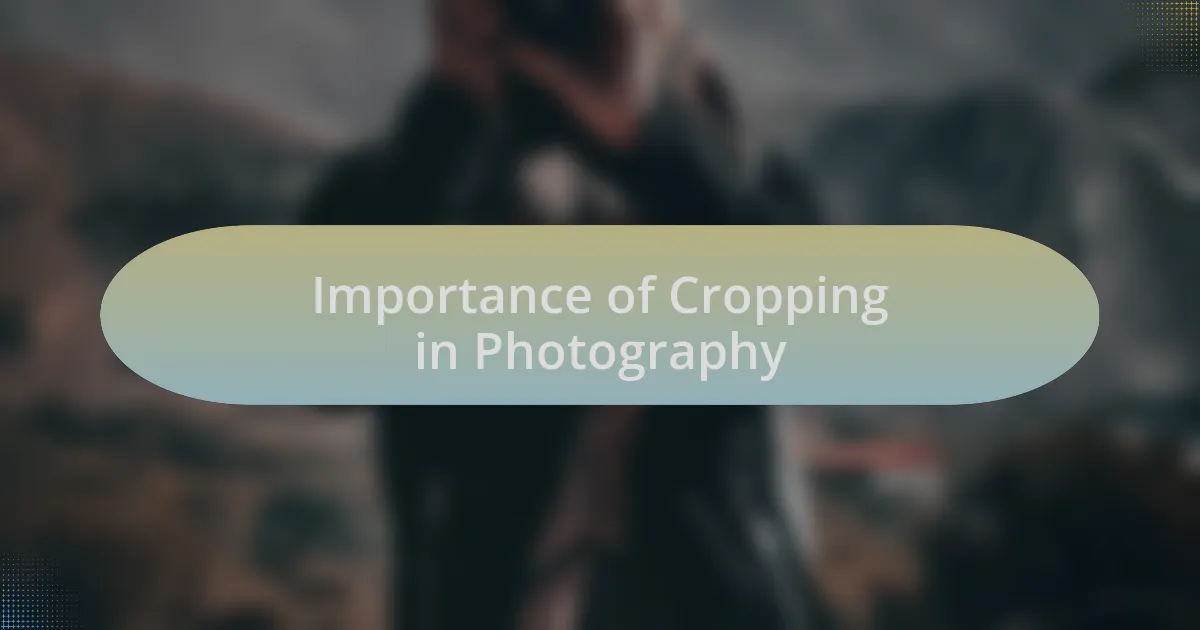
Importance of Cropping in Photography
Each time I crop an image, I realize how crucial this technique is in refining the story I want to tell. For instance, when I took a landscape shot during a hike, I initially included everything—the vast sky, the rolling hills, and the distant trees. Yet, when I cropped out the excess, focusing solely on a sunlit patch of grass, it transformed the photo into an intimate moment of nature, making it feel more personal and inviting. Doesn’t it amaze you how one small adjustment can change the entire mood of a photograph?
Often, I find that cropping not only improves the composition but also influences the emotional response of the viewer. Take my experience with street photography; I once captured a candid moment of a couple laughing amidst a bustling market. By cropping out distracting elements from the sides, I intensified the connection to their joy, making the photo feel like a shared secret. How many stories do you think are lurking behind unnecessary distractions in your own images?
Moreover, cropping helps to emphasize the subject, guiding the viewer’s eye where you want it. A recent portrait I shot of a friend showcases this perfectly. By eliminating the background chaos, I highlighted her expression and the emotion she radiated. It made me ponder, have you ever considered how much you can elevate a photo simply by reducing visual clutter?

Common Cropping Techniques Explained
When I think about common cropping techniques, I often start with the rule of thirds. This technique involves dividing your frame into a grid of nine equal parts and placing your subject along those lines or at their intersections. I remember a time when I shot a vibrant sunset. By cropping the image based on the rule of thirds, I positioned the horizon along one of the horizontal lines, which made the clouds pop and drew the viewer’s eye right to the sun’s fiery glow. Have you ever tried it, only to find your shots suddenly felt more dynamic?
Another cropping technique that resonates with me is centered composition. While this might seem simple, it can create powerful visuals, especially for portraits. Once, I took a photo of my dog, who was sitting perfectly still. I cropped the image to center her in the frame, making her the undeniable focal point. This approach brought out her personality and charm, reminding me how sometimes, less is more. Do you think positioning your subject right in the center could shift your viewer’s focus dramatically?
Lastly, I often explore cropping for storytelling, particularly in documentary photography. I shot a series of images at a local festival, and in one frame, a child’s expression of awe while watching a magician captivated me. By cropping closely, I eliminated extraneous details and enhanced the emotion in that moment. I realized then that cropping can be a tool for enhancing narratives. What’s the most compelling story you’ve ever captured that could benefit from a thoughtful crop?
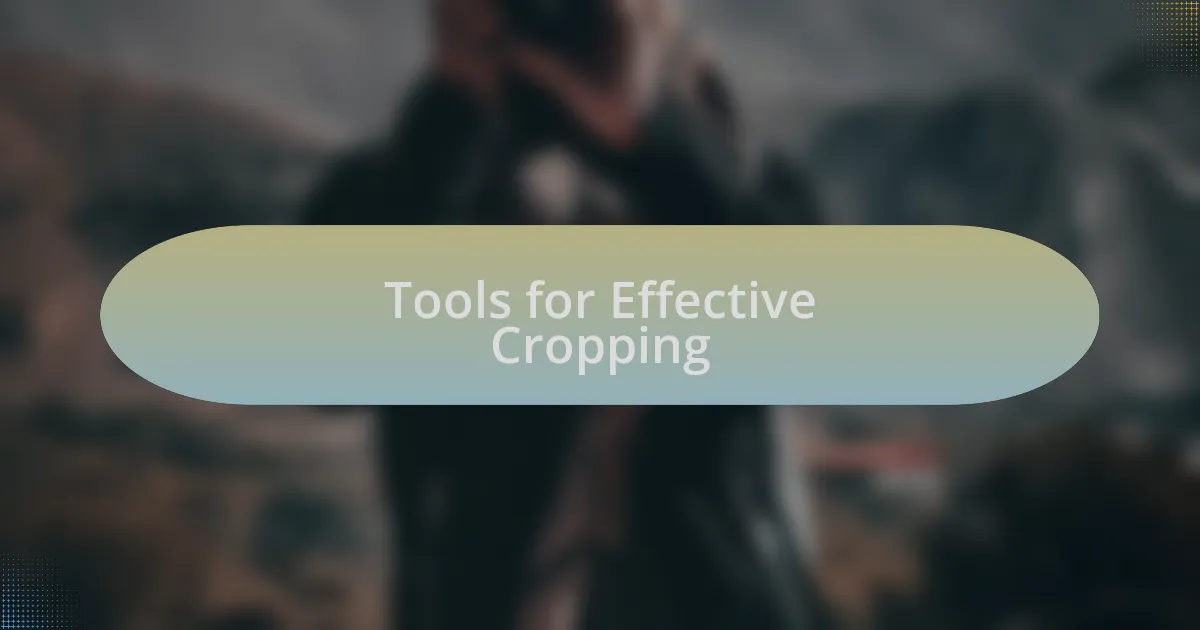
Tools for Effective Cropping
When it comes to cropping effectively, software tools play a pivotal role. I’ve found programs like Adobe Lightroom and Photoshop to be exceptional for this purpose. The precision they offer allows for subtle balance adjustments that can elevate an image significantly. Have you ever fiddled with the cropping tool only to find that slight tweak makes all the difference in how the subject feels centered and balanced?
Beyond software, there are apps on mobile platforms that can enhance your cropping experience too. I remember using Snapseed on my phone during a trip to the mountains. The ease of cutting out distractions and focusing on that breathtaking view taken at sunrise was remarkable. It’s incredible how doing this on-the-go can transform your photographs into memorable pieces that reflect the essence of what you experienced. Have you discovered an app that reshaped your mobile photography?
On the more technical side, utilizing a physical cropping tool, like a crop board, might seem old-school, but it can be invaluable. I still recall using one during a local photography workshop, which forced me to think about composition in a tactile way. By positioning the board around the printed photo, I could physically visualize the changes, which gave me a new perspective on how framing choices impact storytelling. What unique methods have you adopted to hone your cropping skills in a way that resonates with your artistic voice?
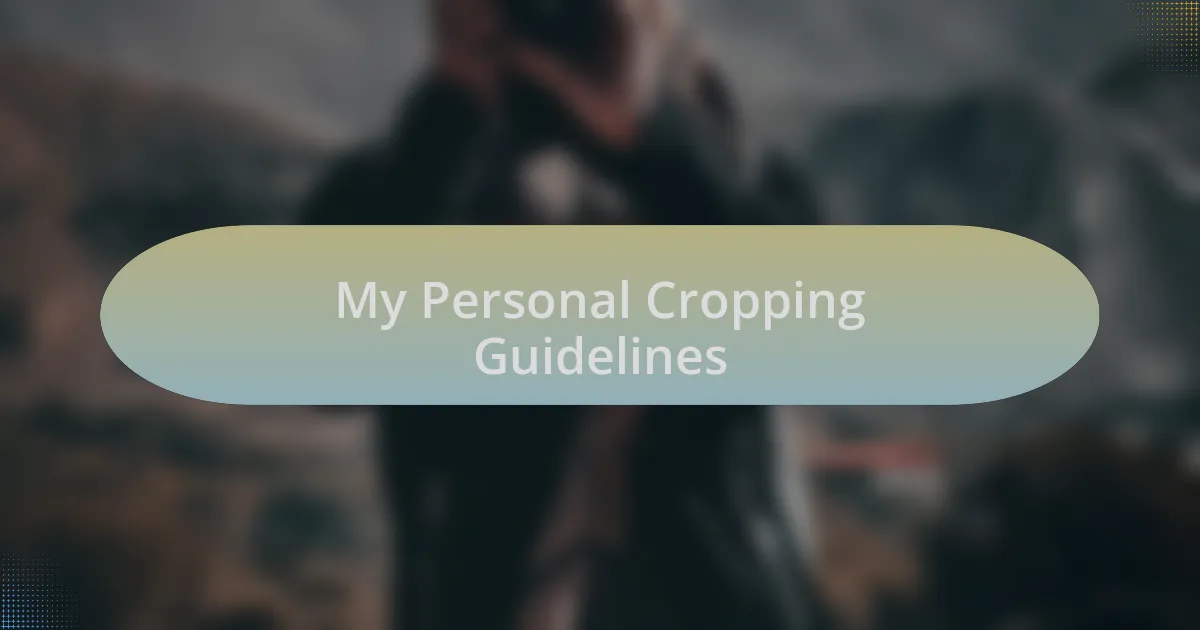
My Personal Cropping Guidelines
When I crop my images, I always consider the rule of thirds as a guiding principle. I remember the first time I positioned a subject off-center; it felt like a revelation. Suddenly, my photographs had more energy and interest—an effect I continue to admire. Have you ever experienced that exhilarating moment when a simple crop changes the entire dynamic of your photo?
I also find that maintaining a sense of balance with negative space is essential. In a recent shoot at a local café, I intentionally left empty space beside a vibrant coffee cup, allowing the warmth of the scene to breathe. This approach not only drew attention to the subject but also conveyed the ambiance of the place beautifully. Why do you think negative space can evoke such strong emotions in viewers?
Another guideline I follow is to be mindful of edges. I once edited a beautiful landscape only to realize that cutting too close to the edge diminished its impact. Now, I always check my compositions for distractions at the borders, ensuring my subject stands out and isn’t competing for attention. Have you found yourself neglecting edges in your cropping process, only to discover later that it altered the photo’s impact?
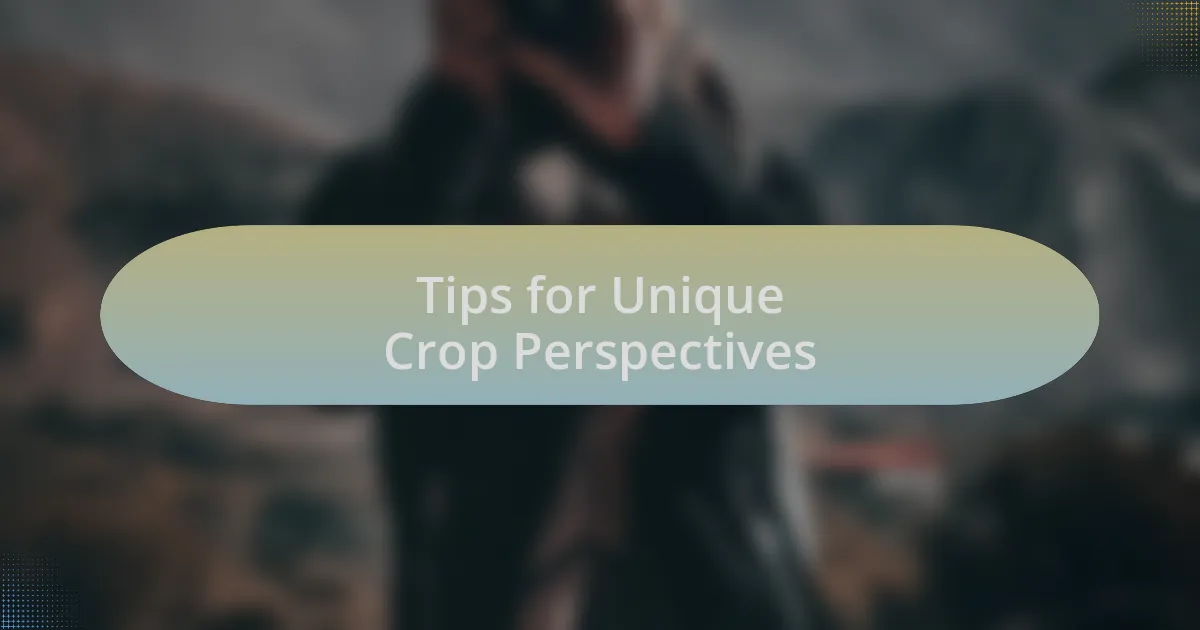
Tips for Unique Crop Perspectives
When exploring unique crop perspectives, I often turn to unconventional angles to add intrigue to my compositions. During a recent street photography session, I decided to frame a bustling market scene from a lower vantage point, emphasizing the feet of hurried shoppers. That small change transformed an ordinary moment into a dynamic portrayal of life in motion. Have you ever experimented with angle shifts that altered the story your photo tells?
I also love to play with unexpected close-ups. One time, while photographing a musician, I focused solely on their weathered hands gripping the guitar strings. This intimate perspective brought out the emotion and dedication that was lost in wider shots. It made me wonder: how can a tight crop reveal deeper connections to the subject?
Incorporating vertical crops can provide a fresh viewpoint, especially in nature photography. I remember scaling a hill to capture a towering waterfall and realizing a vertical crop highlighted its majestic height beautifully, while the horizontal framing made it feel less impactful. Have you thought about how the orientation of your crops influences the narrative within your images?